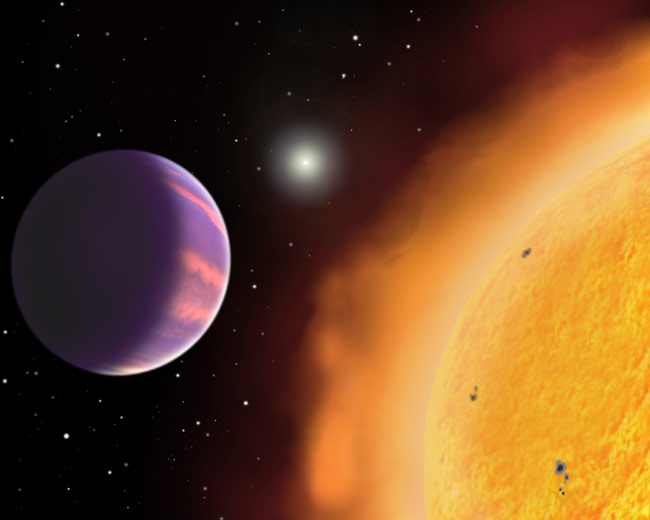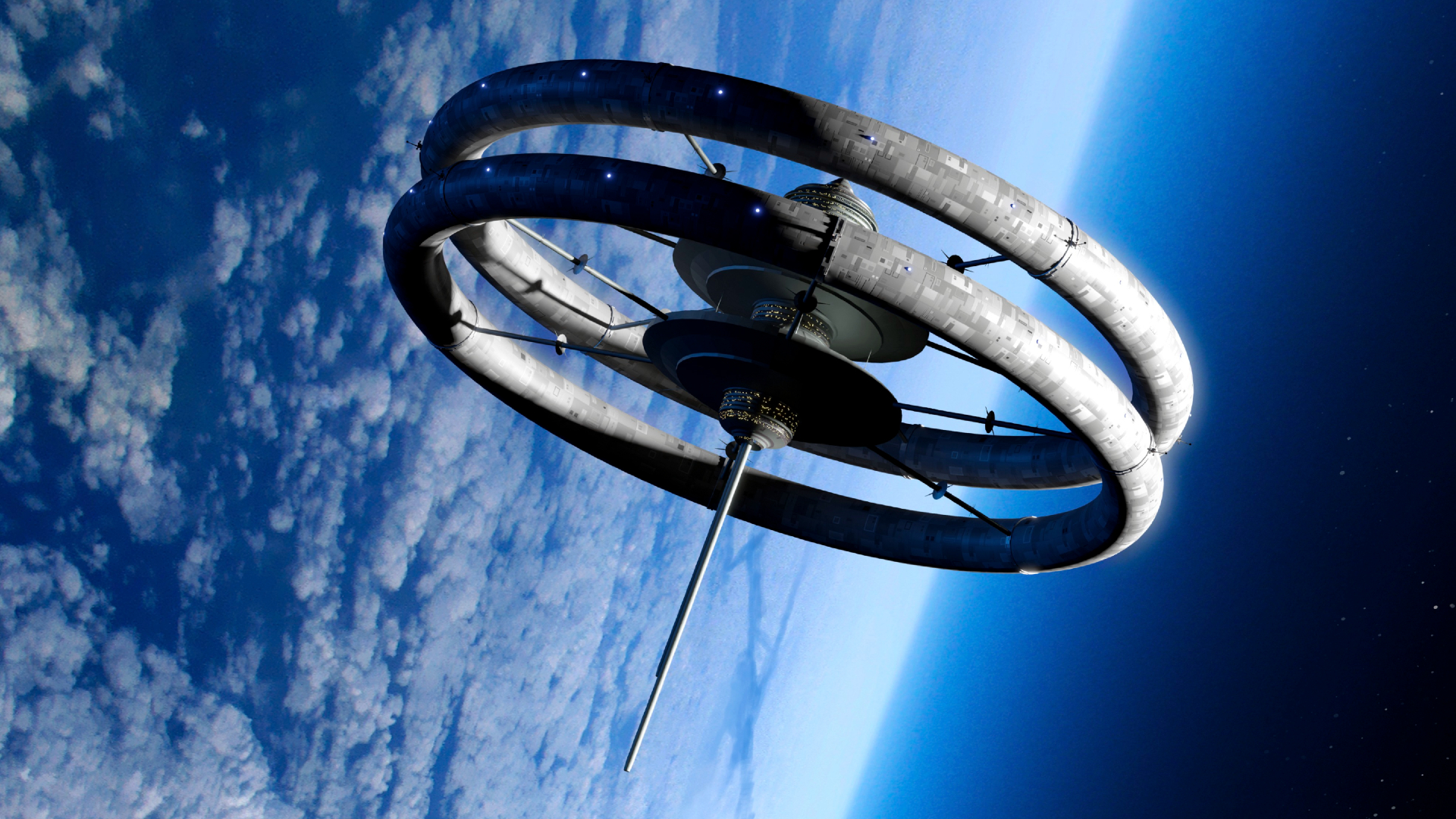Puffy 'Cork' Planet Would Float on Water

A newly discovered planet has one-quarter the density of water and would float if placed in a bathtub large enough to hold it.
"It's lighter than a ball of cork," said study team leader Gaspar Bakos of the Harvard-Smithsonian Center for Astrophysics (CfA).
Called HAT-P-1, the planet is about half as massive as Jupiter but about 1.76 times wider-or 24 percent larger than predicted by theory.
The finding, to be detailed in an upcoming issue of Astrophysical Journal, could force a revision of planet formation theories as astronomers struggle to explain what is causing the planet to swell.
HAT-P-1 belongs to a class of planets called "hot Jupiters" that are so named because they orbit much closer to their stars than Jupiter does to our Sun, despite being roughly the same size.
Using a network of small automated telescopes called HAT, astronomers spotted the object as it passed in front of, or "transited," its parent star 450-light-years away. The star is one member of a binary system called ADS 16402.
When HAT-P-1 transited its star, it caused a dip in the starlight reaching Earth, and astronomers were able to calculate the planet's mass and size.
Breaking space news, the latest updates on rocket launches, skywatching events and more!
HAT-P-1 is not the first low-density planet found outside our solar system, but it is the largest. HD 209458b, the first transit planet ever discovered, is also swollen and about 20 percent larger than theory predicts.
Scientists don't think it's a coincidence that out of the eleven planets have been found using the transit technique, two are lighter than expected.
"We can't dismiss HD209458b as a fluke," said study team member Robert Noyes, also of CfA. "This new discovery suggests something could be missing in our theories of how planets form."
It's still unclear what's puffing the planets up. Additional heat must seep into the planets' interiors to cause the swelling, but scientists don't know how this is happening. Simple solar heating by a star would not work, scientists say, or else all hot-Jupiter's would be expanded, not just two.
- Strangest Things in Space
- Backyard Telescope Helps Find New Planet
- Water Worlds: Astronomer Predicts Many Earth-Like Planets
- Way-Out World: New Technique Finds Most Distant Planet Ever
- All About Planets
Ker Than is a science writer and children's book author who joined Space.com as a Staff Writer from 2005 to 2007. Ker covered astronomy and human spaceflight while at Space.com, including space shuttle launches, and has authored three science books for kids about earthquakes, stars and black holes. Ker's work has also appeared in National Geographic, Nature News, New Scientist and Sky & Telescope, among others. He earned a bachelor's degree in biology from UC Irvine and a master's degree in science journalism from New York University. Ker is currently the Director of Science Communications at Stanford University.
